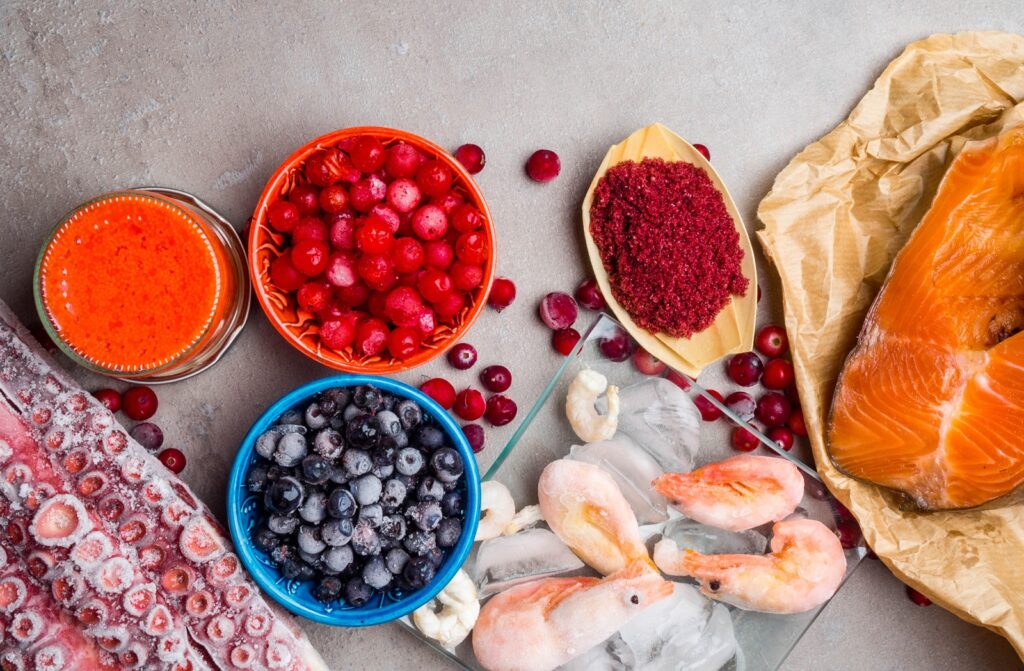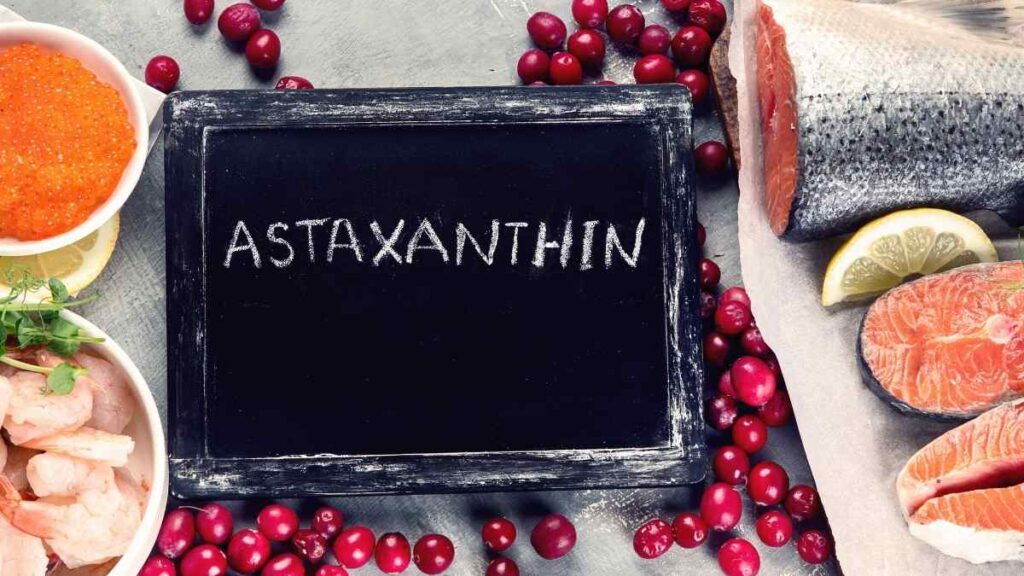In the vast world of health supplements and superfoods, astaxanthin is a rising star — though it’s been around for ages. Dubbed the “king of carotenoids,” this naturally occurring pigment gives salmon, shrimp, krill, and flamingos their reddish-pink hue.
But beyond its striking color, astaxanthin offers impressive health benefits that are backed by science.
So, what exactly is astaxanthin, what does it do for your body, and where can you find it in your diet? Let’s dive in.
What Is Astaxanthin?
Astaxanthin is a carotenoid, a class of powerful antioxidants that also includes beta-carotene (from carrots) and lycopene (from tomatoes). But unlike some other carotenoids, astaxanthin doesn’t convert into vitamin A, making it safer in high doses while still delivering robust antioxidant power.
It’s naturally produced by microalgae like Haematococcus pluvialis. When animals such as salmon or krill eat these algae, the pigment accumulates in their tissues — giving them their characteristic pink or red color.
Health Benefits of Astaxanthin
Astaxanthin is more than just a pigment — it’s one of the most potent antioxidants known to science. Research suggests it may offer a wide range of health benefits:
1. Powerful Antioxidant Protection
Astaxanthin helps neutralize free radicals, which cause oxidative stress and contribute to aging, inflammation, and chronic diseases. It’s estimated to be:
- 6,000x stronger than vitamin C
- 550x stronger than vitamin E
- 10x stronger than beta-carotene
2. Skin Health & Anti-Aging
Astaxanthin may improve skin elasticity, reduce wrinkles, and protect against UV damage — making it a popular ingredient in natural skincare supplements.
3. Eye Health
It crosses the blood-retina barrier and may help protect the eyes from conditions like age-related macular degeneration and eye fatigue from screen use.
4. Brain & Cognitive Support
Astaxanthin’s ability to cross the blood-brain barrier suggests it may protect brain cells from oxidative damage, potentially supporting memory and cognitive function.
5. Heart Health
It may improve blood flow, reduce oxidative damage to LDL cholesterol, and lower inflammation — all beneficial for cardiovascular health.
6. Exercise Recovery & Endurance
Some studies show that astaxanthin can help reduce muscle soreness and improve recovery after intense physical activity, possibly by reducing oxidative stress and inflammation.
What Foods Contain Astaxanthin?
You won’t find astaxanthin in fruits or vegetables like many other antioxidants. Instead, look to the sea. Natural sources include:
- Wild salmon (especially sockeye salmon – one of the richest sources)
- Krill
- Red trout
- Shrimp
- Lobster
- Crayfish
- Crab
- Microalgae (Haematococcus pluvialis) — the original producer, often used in supplement form
📝 Note: Farmed salmon contains less astaxanthin unless it’s added to their feed (sometimes synthetically). For the best natural source, opt for wild-caught salmon.
Astaxanthin Supplements
If you’re not a fan of seafood or want a concentrated dose, astaxanthin supplements are widely available. Most high-quality supplements use natural astaxanthin derived from microalgae. A typical dose ranges from 4 to 12 mg per day, but always consult your healthcare provider before starting a new supplement.

Astaxanthin is a remarkable antioxidant with wide-ranging benefits — from better skin and sharper vision to reduced inflammation and improved heart health. While it’s not as common in everyday foods as other nutrients, you can still get it through a diet rich in wild seafood or by taking natural supplements.
Whether you’re an athlete looking to boost recovery, someone concerned about aging, or just striving for better overall health, astaxanthin might be worth exploring.
Quick Summary:
- ✅ What it is: A potent antioxidant carotenoid found in seafood
- 💪 Benefits: Fights oxidative stress, supports eyes, skin, heart, brain, and exercise recovery
- 🍤 Found in: Salmon, shrimp, lobster, krill, red trout, and microalgae
- 💊 Available as a supplement: 4–12 mg daily (consult your doctor)

